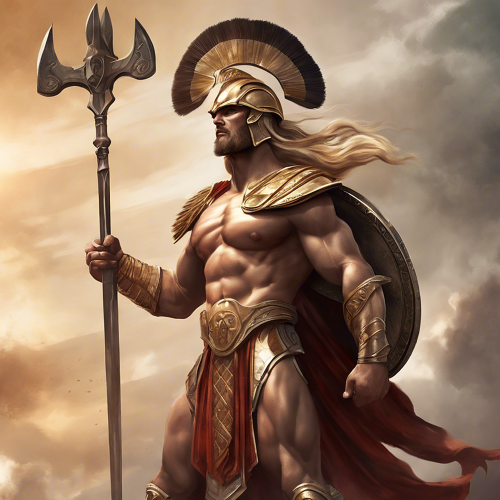5 Sacred Peaks in Mythology (Plus a Bonus One You Didn’t Expect)
Introduction
Mountains dominate landscapes not only with their size but also with their presence in human imagination. Across the world, cultures have regarded certain mountains as sacred peaks, places where gods dwell, spirits roam, or the cosmos itself finds balance. These mythological mountains became central to religious practices, rituals, and legends, representing humanity’s eternal quest to connect with the divine. Here are five of the most celebrated sacred peaks from different mythologies—plus one intriguing bonus peak you may not expect.
1. Mount Olympus – The Throne of the Greek Gods
In Greek mythology, Mount Olympus reigns supreme as the home of the twelve Olympian gods. Rising high above northern Greece, its summit hidden in clouds was seen as a divine fortress where Zeus held court, Athena devised strategies, and Apollo played his golden lyre.
Olympus represented authority, immortality, and the divide between gods and mortals. Unlike mortal cities, which were vulnerable to war and ruin, Olympus stood untouched, symbolizing divine order. To the Greeks, its lofty heights embodied the ultimate seat of power and the unreachable majesty of the divine. Even today, the mountain remains a cultural symbol of mythological grandeur and divine authority.
2. Mount Meru – The Cosmic Pillar of Hindu and Buddhist Cosmology
At the heart of Hindu, Buddhist, and Jain cosmology lies Mount Meru, described as the axis of the universe. Mythology paints it as a radiant golden mountain, taller than any earthly peak, around which continents and oceans revolve. Its summit connects heaven with earth, while its roots sink into the underworld, uniting the three realms of existence.
For Hindus, Meru is the seat of Brahma, the creator, and a gathering place for gods. In Buddhist cosmology, it is central to spiritual geography, surrounded by heavenly realms that represent enlightenment and cosmic harmony. More than a mountain, Meru is a concept—an eternal reminder of balance, creation, and humanity’s place in the grand design of the universe.
3. Mount Fuji – Japan’s Sacred Peak of Purity
Standing majestically in Japan, Mount Fuji blends natural beauty with spiritual reverence. In Shinto traditions, Fuji is sacred to Konohanasakuya-hime, the goddess of blossoms, symbolizing renewal, life, and purity. Its snow-capped peak evokes the image of divine serenity, while its volcanic fire beneath hints at transformative power.
Pilgrimage routes to Fuji date back centuries, with climbers ascending its slopes as an act of purification. In Buddhism, Fuji also gained significance as a site of meditation, where monks sought enlightenment through endurance and reflection. Unlike other sacred peaks that remain forbidden, Fuji invites worshippers to climb, allowing mortals to participate directly in its sanctity.
4. Mount Kailash – The Untouched Abode of Shiva
In Tibet stands Mount Kailash, one of the most revered sacred peaks in Asia. Hindus believe it is the home of Lord Shiva and his consort Parvati, a place of eternal meditation and cosmic energy. Buddhists identify it with Mount Meru, while Jains see it as the site of liberation for their first Tirthankara. The Bon religion regards it as the seat of spiritual power.
Unlike other Himalayan peaks, Kailash has never been climbed. Out of reverence, pilgrims walk the Kora, a 52-kilometer circumambulation around its base, believed to wash away sins and grant spiritual merit. Its untouched summit makes it unique—a mountain that defies human conquest, embodying the idea that some sacred peaks belong solely to the divine.
5. Mount Tlaloc – The Rain God’s Peak in Aztec Mythology
In Aztec mythology, Mount Tlaloc was the dwelling of Tlaloc, the rain god who controlled fertility and agricultural cycles. The mountain was not just a place of worship but a life-giving force—without Tlaloc’s rains, the Aztec empire could not survive.
Ceremonies and sacrifices were performed on its slopes to appease the god and ensure bountiful harvests. Caves and springs within the mountain were thought to be gateways to the underworld, where rain spirits resided. Mount Tlaloc symbolized both divine benevolence and divine wrath, embodying the delicate balance between nature and humanity. For the Aztecs, this sacred peak was both a source of fear and hope, embodying the fragility of life sustained by rain.
Bonus: Mount Kunlun – The Celestial Mountain of Chinese Mythology
As a bonus, we turn to Mount Kunlun, a mythical mountain often described as the cosmic paradise in Chinese mythology. Said to be the residence of the Jade Emperor and the legendary Queen Mother of the West, Xi Wangmu, Kunlun was believed to host jewel-covered trees, phoenixes, and streams of immortality.
Unlike other peaks that are firmly grounded in geography, Kunlun exists more in myth than in reality. It symbolizes longevity, divine order, and the pursuit of immortality. For Chinese poets and mystics, Kunlun was less about climbing and more about envisioning—a sacred peak of imagination that represented humanity’s deepest spiritual aspirations.
Conclusion
From the godly halls of Olympus to the untouched sanctity of Kailash, from Fuji’s purifying ascent to Tlaloc’s rain-bringing slopes, sacred peaks have always shaped mythology and culture. They embody humanity’s longing to connect with forces greater than ourselves, whether through divine authority, cosmic order, or the natural cycles of life. The bonus peak, Kunlun, reminds us that not all sacred peaks need to exist in physical form—some live eternally in the imagination, shaping the myths we tell and the values we hold.
No posts were found.









